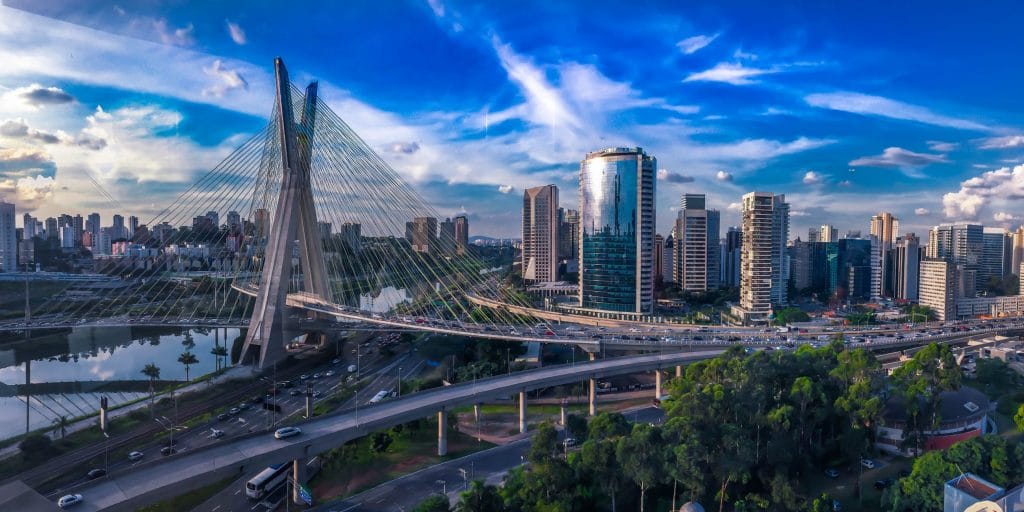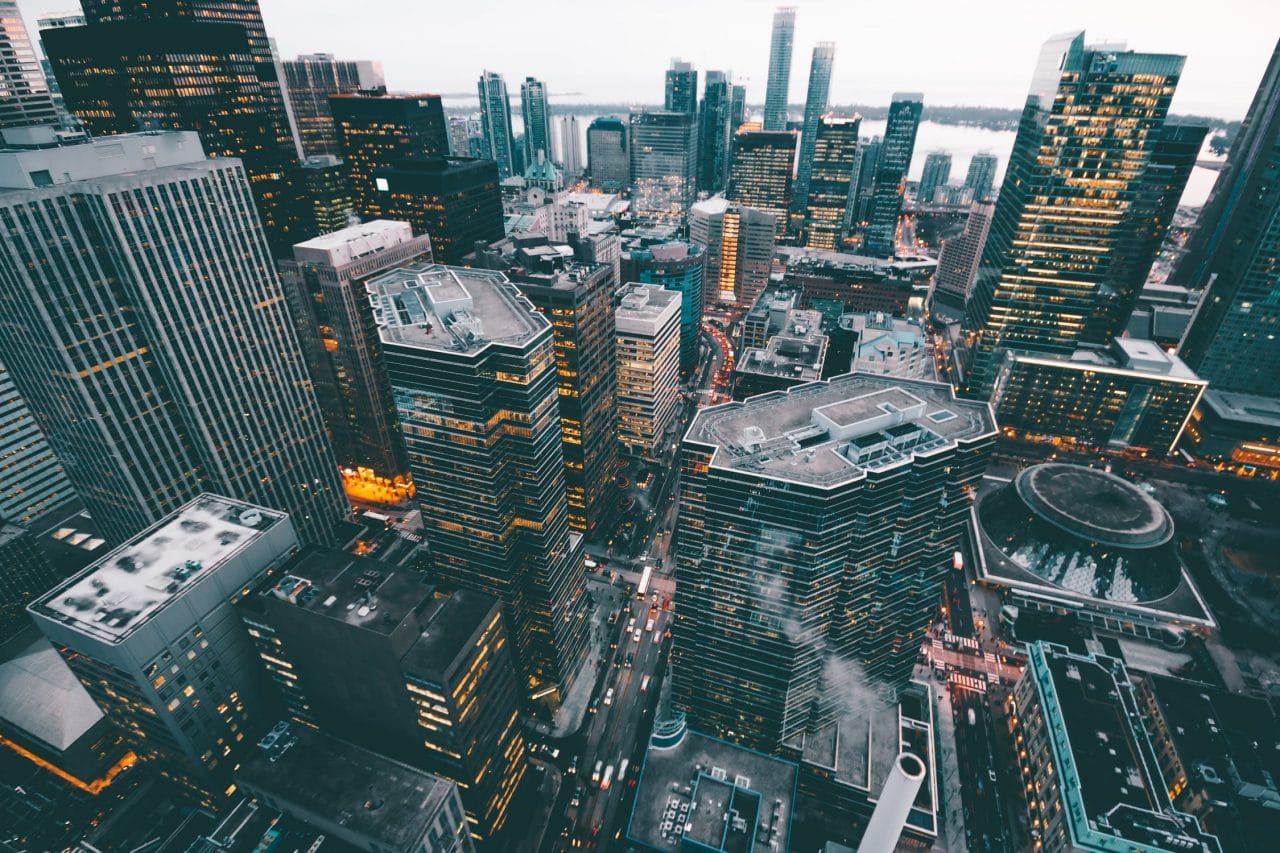Urbanization is something that eventually happens in any developing country, as the population condenses into smaller cities and towns. Agriculture begins to decline, and industrialization fuels the move from rural areas to urban ones.
There are some positives and negatives to urbanization. When done correctly, urbanization means a greater variety of opportunity for residents. If it gets out of hand, though, crime and poverty start to rise uncontrollably.
Ahead, we’ll answer the questions: what is urbanization? And: How does it affect us?
What is Urbanization?
Urbanization is when people move from rural farmland to cities and towns. Rural areas are more densely packed and offer greater opportunities to their residents in the form of higher paying jobs and a larger variety of job opportunities.
Most developing countries experience the process of urbanization, especially once they start becoming industrialized. Cities and towns become hubs of trade and culture, and more people start moving out of the country to gain access to some of these social and financial benefits.
Urbanization is a natural part of developing society, but it has its downside as well. As populations in cities and towns rise, they expand and eventually invade rural areas. We need to strike a balance with urbanization if we want to flourish as a society.
What Causes Urbanization?
Urbanization is inevitable as a country’s production moves away from agriculture and towards industry. People begin to move to the cities for better access to employment and resources.
Multiple factors contribute to urbanization, and many of them are positive. People seek the best opportunity to provide for themselves and their families, and urban environments are often the answer.
An Increase in Employment Possibilities
Urban areas have more jobs to offer and can lure people out of rural areas with the promise of a better life and a higher-paying salary. People find more jobs in virtually every industry while looking in cities and towns than they do searching rural locations.
There are more people in urban areas, which means there is more demand. The increased demand opens the door to employment opportunities for a lot of people who can’t find a job in their rural hometown.
In developing countries, employment opportunities often open rapidly through the process of industrialization. Every developing country goes through a period of industrialization, where jobs move from agriculture to production. People begin to move to cities and towns more frequently, adding to the urbanization of that country.
Access
Another reason people flock to cities and towns is the access they present. In urban areas, people have access to better schools, healthcare facilities, better living standards, and increased trade opportunities.
There is a long list of social benefits associated with moving to urban environments. A lot of the time, people move to these areas to start a family and offer their kids access to better schooling and health care possibilities.
Trade is another form of access that is enhanced in urban areas. Cities are especially home to greater trade opportunities, and some people move to have access to more commercial options.
Modernization
There’s something inherently romantic about moving to the city. Cities are more modern than rural environments, and people are attracted to the fashion, food, and ideas flowing in the city.
People often move to cities for a fresh start. They want to learn more about culture and experience the hustle and bustle of daily city life. Some people dream of moving to the “big city” for most of their lives. They might be disappointed when they get there, but a lot of cities have a modern, romantic draw to them.
How Does Urbanization Affect Us?

Urbanization has several positive effects on our society, but too much of it is detrimental. As more people move to the city, the promised opportunities begin to dwindle. Traffic will become nearly unbearable, and poverty rises as jobs fill-up.
At some point, the cities and towns become worse than the rural areas from which people moved. Urbanization might be a natural societal process, but too much urbanization can lead to catastrophe.
Increased Employment and Access
As we stated above, urbanization isn’t all bad. It opens the door for people to move to a place that gives them more employment choices and access to better schools and health care. Cities and towns give people more upward mobility, and they’re no longer stuck in the social class in which they were born.
As people move towards cities and towns, jobs open up to attend to the influx of people. Demand rises, and supply must match, so companies hire more people to work for them. The surrounding area profits as property value rises, and people can move up the social ladder.
Overcrowding
If too many people start moving from rural areas to urban areas, the cities and towns begin to experience overcrowding. It’s at this point that the benefits of urbanization start to dwindle and the negatives rear their heads.
Since cities and towns offer the promise of greater opportunities, more rural residents move to them. Eventually, urban areas experience a tipping point where the possibilities begin to dry-up. Too many people pack themselves in a small space, and we start to see unemployment and crime rise.
Housing becomes an issue when cities and towns experience overcrowding. The housing prices rise, which is fantastic for people who own property but can be devastating for everyone else. Since everyone is looking for a job to pay rent, competition becomes nearly unmanageable. The net result is people moving to the city and can’t afford a place to live.
Unemployment and Poverty
Another effect of overcrowding of urban areas is a sharp uptick in unemployment. Jobs become scarce as people struggle to make enough money to keep up with the rising cost-of-living. It might be easy to find a position at first, but when the city or town becomes overcrowded, the competition is too stiff.
As a result, more people become unemployed or underemployed. The might be qualified to work in an office, but need to take a job working at a convenience store to afford housing.
Since rent becomes so expensive as people move to urban locations, slums and ghettos begin to develop. Area for housing dries up, and people must live in small spaces to save some money.
Where opportunities used to be plentiful, they start to become scarce. Education and social services become strained, and poverty rises. As people struggle to feed themselves, crime and drug use starts to spike. Crime isn’t isolated to urban environments, but it’s certainly more common.
What Can We Do About Urbanization?
Since urbanization has some significant disadvantages, we need to start changing the way we tackle cities and towns. Ahead are some steps our societies can use to prevent some of the negatives of urbanization.
Preventing Overpopulation
Overpopulation is one of the back-breakers for urban environments. Populations rise in cities, and the overcrowding starts to exacerbate the already existing problems.
Fighting overpopulation starts with education, so providing more educational resources is one of the best ways to combat excessive urbanization. We need to teach citizens about the overpopulation problem, as well as provide access to contraception and prevent unplanned pregnancy.
Building Better Cities
Overcrowded cities quickly become unhealthy for their residents. Pollution skyrockets when a large number of people live in a small space. The only way to limit these effects is to build cities with the environment in mind.
Sustainability is the keyword when considering “what is urbanization?” A lot of cities across the globe are unsustainable. Instead of resigning to building expensive housing and low-cost slums, we should focus on creating cities that work for everyone.
City planners should use renewable energy, water recycling, and green travel to their benefit. Local governments need to be more mindful of their city planning so their populations can thrive for the foreseeable future.
Creating Opportunity
Opportunity is one of the reasons people move to cities and towns in the first place, but they dry up quickly. One of the ways to make urban environments more sustainable is to create more jobs and opportunities as the population rises.
Companies can use the surrounding environment to their advantage to create more jobs. Promoting tourism and enhancing living spaces gives people more variety in employment. Supporting schools increases access to education, which makes for a more qualified workforce.
Keeping city residents comfortable is essential. Once they become restless, crime starts to creep in.
Keeping Urbanization Sustainable
People will eventually start moving away from rural areas and towards cities and towns. There’s nothing we can do to prevent this natural societal mobility, but we can take steps to make it more sustainable.
Creating jobs and opportunities will allow people who move to urban areas ways to make a living. There will always be a bit of poverty in cities, but we can provide education and resources to help pull people out of the cycle of poverty.
If urbanization is to continue, we need to start planning for the future. Building sustainable cities is a start, but businesses need to find ways to create more jobs for people living in the area. Urbanization is inevitable, but it doesn’t always have to be a bad thing.









